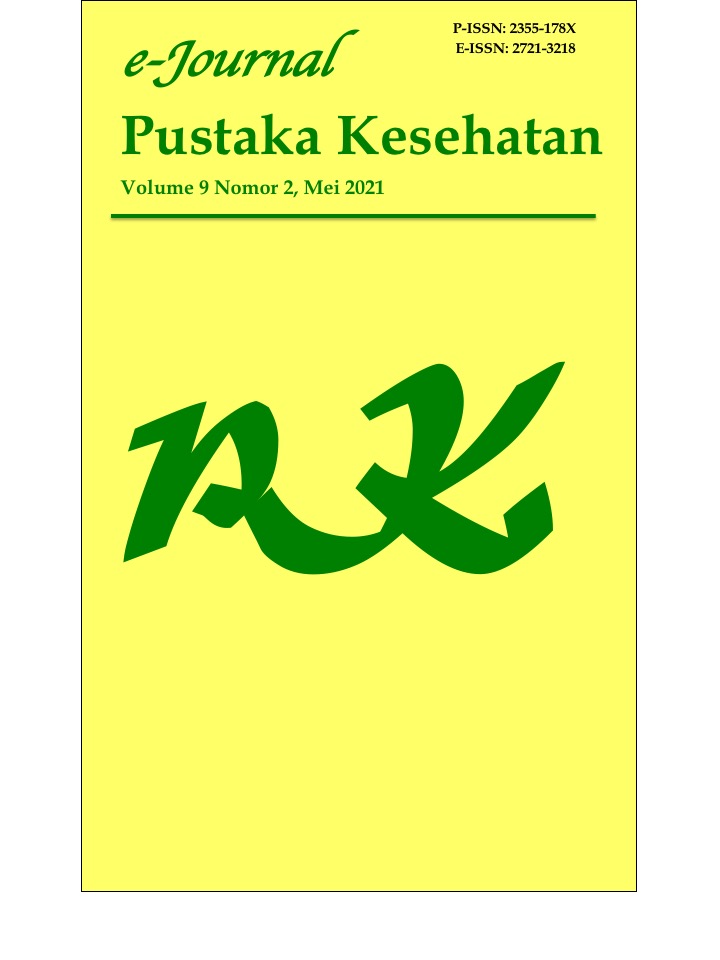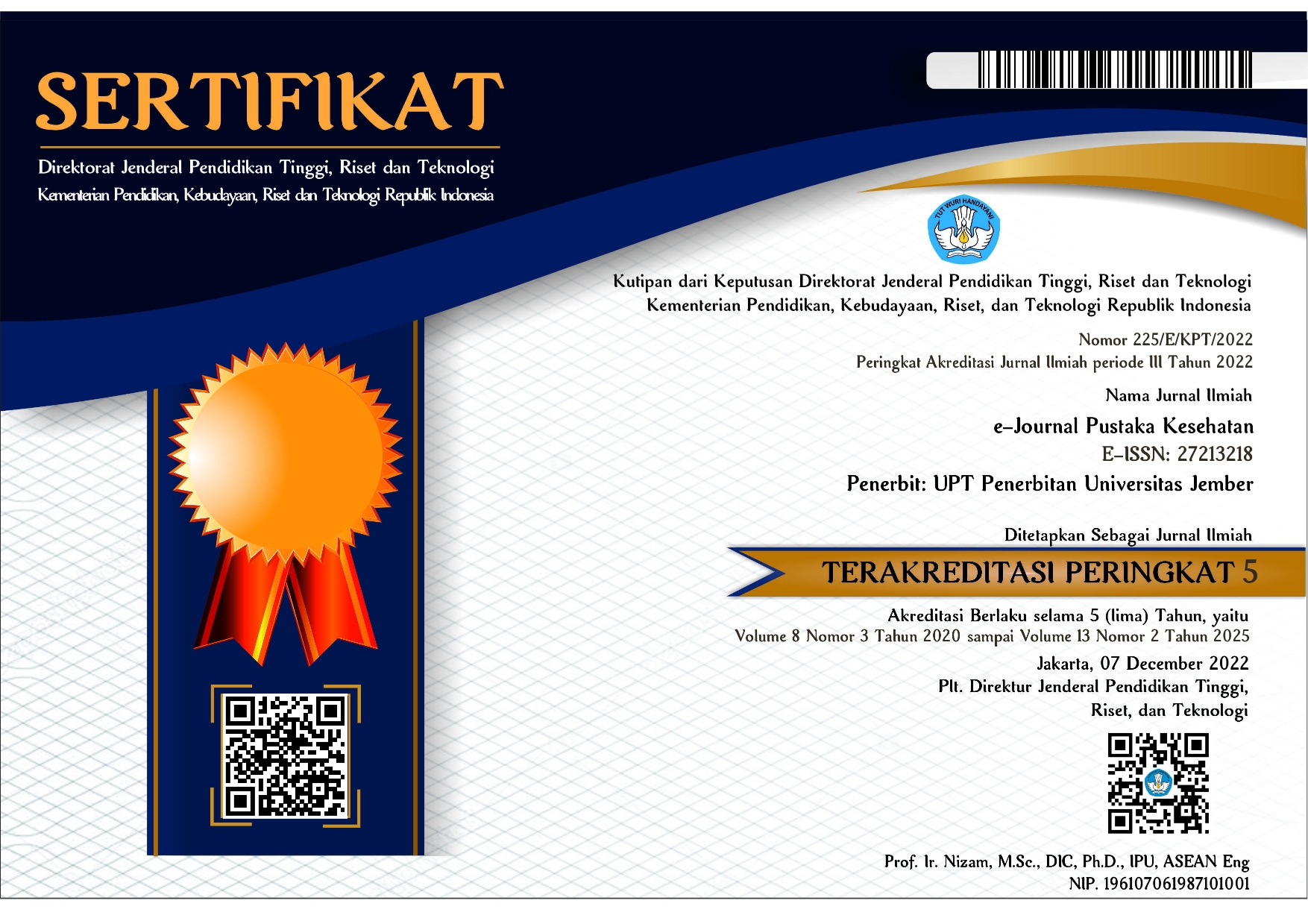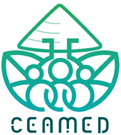Level Glukosa Darah pada Mencit Diabetes Setelah Pemberian Ekstrak Rumput Laut Coklat (Phaeophyta)
Abstract
Diabetes mellitus (DM) is a disorder of hyperglycemia and glucose intolerance caused by insulin deficiency or insulin disorder. Insulin hormone functions in the formation of glucose as an energy source. Consequently, glucose accumulates in the blood in DM patients and affects increased free radicals within the cell and oxidative stress. In DM patients with an imbalance of oxidants and antioxidants in his plasm, therefore, patients with DM require a large amount of antioxidants intake. One alternative treatment is seaweed. Brown seaweed contains bioactive components such as polyphenols and carotenoids, which exhibit antioxidants and reduce blood glucose levels. The study aimed to analyze the effect of brown seaweed extract on the blood glucose levels in diabetic mice. The study used a research design of pre and post-test control group design. The study was divided into 4 sample groups, namely the normal group, negative controls (diabetic mice), positive control (diabetic mice + 1.3 mg / 20 gr BB metformin), P1 (diabetic mice + brown seaweed extract). The seaweed dose of 10mg / 20grBB is given daily for 21 days. Blood glucose level checks using Glucometer and strip test (Autocheck™). Brown seaweed extract has an effect on reducing blood glucose levels in diabetic mice.
References
[2] Ramachandran S, Samith SA, dan Nanditha A. 2012. Trends In Prevalence Of Diabetes In Asian Countries. World Journal of Diabetes, Vol.3(6): 110-117.
[3] Riset Kesehatan Dasar (Riskesdas). 2018. Badan penelitian dan pengembangan kesehatan kementrian kesehatan RI.
[4] Syamsudin, Sumarny R, dan Partomuan S. 2010. Antidiabetic Activity of Active Fractions of Leucaena Leucocephala Dewit Seeds in Experiment Model. European Journal of Scientific Research, Vol.43(3): 384-391.
[5] Tjay TH, dan Rahardja K. 2007. Obat- Obat Penting, Khasiat, Penggunaaan dan Efek-efek Samping. Edisi VI. Jakarta: Elex Media
[6] Desminarti S. 2012. Efek Bubuk Tempe Instan Terhadap Kadar Malonaldehid (MDA) Serum Tikus Hiperglikemik. Jurnal Kedokteran Hewan. 6 (2)
[7] Widowati W. 2008. Potensi Antioksidan sebagai Antidiabetes. Jurnal Kedokteran Maranatha 7(2): 193-202.
[8] Setiawan B, dan Suhartono E. 2005. Stres Oksidatif dan Peran Antioksidan pada Diabetes Melitus. Majalah Kedokteran Indonesia. 55 (2): 87-90.
[9] Wijaya N, Faturrohmah A, Yud A, Mufarrihah, Soesanto TG, Kartika D, Agustin W, Hikmah PNS, Putri. 2015. Profil Penggunaan Obat pada Pasien Diabetes Melitus Di Puskesmas Wilayah Surabaya Timur. Departemen Farmasi Komunitas Fakultas Farmasi Universitas Airlangga Jl. Dharmawangsa Dalam Surabaya 60286 Indonesia. Jurnal Farmasi Komunitas.2(1):23-28.
[10] Nathan MN, Buse JB, Mayer BD, Ferrannini E, Holman RR, Sherwin R. 2008. Medical management of Hyperglycemia in Type 2 Diabetes A consensus Algorithm for the Initiation and Adjustment of Therapy. A consensus statement of the American Diabetes Association and the European Association for the Study of Diabetes. Diabetes Care; 31:1-11.
[11] Nugroho AE, 2006. Hewan Percobaan Diabetes Mellitus: Patologi dan Mekanisme Aksi Diabetogenik. Review Biodiversitas. 7(4)
[12] Lee SH, dan Jeon YJ. 2013. Anti- diabetic effects of brown algae derived phlorotannins, marine polyphenols through diverse mechanisms. Fitoterapia, 86: 129–136.
[13] Kelman D, Posner EK, McDermid KJ, Tabandera NK, Wright PR, dan Wright AD. 2012. Antioxidant activity of Hawaiian marine algae. Mar. Drugs. 10: 403–416.
[14] Azhagu R, Mala K, dan Prakasam A. 2015. Phytochemical analisis of marine macroalga Caulerpa recemosa (J.Agardh) (chlorophyta-caulerpales) from Tiruneveli District, Tamilnadu, India. Jurnal of Global Biosciences. 4: 3055- 3067.
[15] Cornish ML, dan Garbary DJ. 2010. Antioxidants from macroalgae: potential applications in human health and nutrition. Algae, 25(4): 155-171.
[16] Prasetyaningrum A, Sari KD, dan Wardhani HD. 2013. Kajian isolasi senyawa fenolik rumput laut (Euceuma cottonii) berbantu gelombang mikro dengan variasi suhu dan waktu. Jurnal Teknik Kimia, 19 (03): 38-43.
[17] McDermid KJ, dan Stuercke B. 2003. Nutritional composition of edible Hawaiian seaweeds. J. Appl. Phycol., 15(6): 513-524.
[18] Miyashita K. 2009. The carotenoid fucoxanthin from brown seaweed affects obesity. Lipid Technology, 21(8‐9): 186- 190.
[19] Ganong WF. 1990. Review of Medical Physiology 9th ed. California: Lange Medical Publication. 327-328.
[20] Turner CD, dan Bagnara JT. 1998. Alih bahasa: Harsoyo. Endokrinologi Umum edisi ke-6. Surabaya: Airlangga University Press: 335 – 349.
[21] Hikmah N, Yuliet, Khaerati K. 2016. Pengaruh Pemberian Ekstrak Daun Salam (Syzygium polyanthum Wight.) Terhadap Glibenklamid Dalam Menurunkan Kadar Glukosa Darah Mencit (Mus musculus) yang Diinduksi Aloksan. Galenika Journal of Pharmacy. 2(1): 24-30.
[22] Szkudelski T. 2001. The mechanism of alloxan and sreptozotocin action in cells of the rat pancreas. Physiol. Res. 50: 536-546.
[23] Suyono S. 2007. Diabetes Mellitus di Indonesia. Buku Ajar Ilmu Penyakit Dalam. Edisi ke-4. Jilid III. Jakarta: Pusat Penerbitan Departemen Ilmu Penyakit Dalam FK UI.
[24] Mushollaeni W. dan Rusdiana E. 2013. Test of hypoglikemic effect of brown seaweeds extract (Padina and Sargassum binderi) on mice induced by alloxan. J. Agric. Food. Tech. 3(7): 5-11.
[25] Dasgupta A. dan Klein K. 2014. Antioxidants in Food, Vitamins and Supplements. USA: Elsevier.
[26] Rahmah NL. 2012. The potency of Sargassum duplicatum bory extract on inflammatory bowel disease therapy in rattusnorvegicus. Journal of Life Sciences. 6: 144-154.
[27] Kochhar SP. dan Rossell JB. 1990. Detection, Estimation and Evaluation of Anti Oxidants in Food Systems. New York: Elsevier Applied Science.
[28] Leng LW, dan Chan LK. 2003. Plant regeneration from stem nodal segments of ortosiphon stamineus benth a medical plant with diuretic activity. Journal In Vitro Cellular & Developmental Biology- Plant. 40(1).
[29] Almatsier S. 2004. Prinsip Dasar Ilmu Gizi. Jakarta: Gramedia Pustaka Utama.
[30] Blokhina O, Virolainen E, dan Fagerstedt K. 2003. Antioxidants, oxidative damage and oxygen deprivation stress: a review. Journal Annals of Botani. 91: 179- 194.
[31] Namvar F, Mohamad R, Baharara J, Zafar-Balanejad S, Fargahi F, dan Rahman HS. 2013.Antioxidant, antiproliferative, and antiangiogenesis effects of polyphenol-rich seaweed (Sargassum muticum). Journal Biomed Research International. 60: 47-87.
[32] Agung GS, Fathnur SK, Moniq C. 2018. Uji perbandingan efektivitas antidiabetes ekstrak polisakarida dan senyawa polifenol alga coklat (Sargassum Sp.) pada mencit yang diinduksi aloksan. Jurnal Ilmiah Manuntung. 4(1): 48-52.
[33] Kuncahyo I, dan Sunardi. 2007. Uji Aktivitas Antioksidan Ekstrak Belimbing Wuluh (Averrhoa bilimbi, L.) terhadap 1,1-Diphenyl-2-Picrylhidrazyl (DPPH). Fakultas Teknik Universitas Setia Budi. Yogyakarta.
[34] Riwu M, Subarnas A, dan Lestari K. 2015. Korelasi faktor usia, cara minum, dan dosis obat metformin terhadap risiko efek samping pada penderita diabetes melitus tipe 2. Jurnal Farmasi Klinik Indonesia. 4(3): 151-161.
[35] Perkeni. 2015. Konsensus Pengelolaan dan Pencegahan Diabetes Mellitus Tipe 2 di Indonesia 2015. Jakarta: PB Perkeni.
[36] Manaf A. 2014. Insulin resistance as a predictor of worsening of glucose tolerance in type 2 diabetes melitus. Scientific Journal of Pharmaceutical Development and Medical Application. 27: 7.
[37] Ndraha S. 2014. Diabetes melitus tipe 2 dan tata laksana terkini. Scientific Journal of Pharmaceutical Development and Medical Application. 27: 9-16.
[38] Sari FD. 2016. Pola penggunaan obat anti hiperglikemik oral pada pasien diabetes melitus tipe 2 rawat inap di rumah sakit x Pekanbaru tahun 2014. Jom FK. 3(1):1-14.
[39] Guidoni CM, Borges AP, Freitas OD. dan Pereira LR. 2012. Prescription Pattern for Diabetes Mellitus and Theurapethic Implications: A Population-based Analysis. Pharmaceutical Assistance and Clinical Pharmacy Research Center (CPAFF). Universitas Sao Paulo Brazil. 56(2).
e-Journal Pustaka Kesehatan has CC-BY-SA or an equivalent license as the optimal license for the publication, distribution, use, and reuse of scholarly work. Authors who publish with this journal retain copyright and grant the journal right of first publication with the work simultaneously licensed under a Creative Commons Attribution-ShareAlike 4.0 International License that allows others to share the work with an acknowledgment of the work's authorship and initial publication in this journal.











